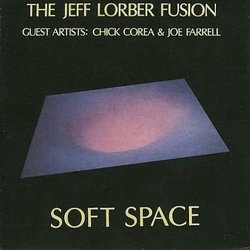An Early Jeff Lorber Masterpiece
John Marcus | Central GA, USA | 11/24/2008
(5 out of 5 stars)
"The Jeff Lorber Fusion, along with Donald Byrd, Bob James, and Grover Washington, Jr.,helped the jazz genre turn the corner as it moved into the 1970's. Fusion, a style of jazz which merges (or fuses) jazz with other types of music (rock music, initially), was introduced by Miles Davis and Cannonball Adderly. Miles Davis is also credited with bringing young talent into the forefront, such as Herbie Hancock, Chick Corea, Wayne Shorter, and Michael Henderson. These 2nd generation Miles disciples would then forge their own signatures onto the music of their era and take jazz music into new directions, giving it new life and an extended fanbase.
Another bandleader doing something similar was Jeff Lorber. Credited with introducing us to Kenny G and Dave Koz, Jeff Lorber Fusion used R&B and funk melodies to fuse with jazz. I have no doubt that this is what led to contemporary jazz, and today's smooth jazz, which is nothing more than further attempts to commercialize jazz by merging it with Motown, R&B, and popular music of the day.
On the CD, "Soft Space", Lorber is re-joined by his nucleus, Dennis Bradford (drums), Terry Lane (sax & flute), Lester McFarland (bass), Ron Young (percussion). Special guests include Chick Corea, Joe Farrell (guitar), and Bruce Smith (drummer)who also played with the R&B group, Pleasure. This electrifying recording sizzles from the first note, and never loses its creative energy. If you liek your jazz with a little funk, enjoy syncopation and lots of Fender Rhodes, this will make a nice addition to your collection.
Happy listening.
John Marcus
Program Director,
Smooth Soul Online
http://smoothsoul.net"
We've waited so long...
R. Scott | Reston, VA United States | 08/10/2009
(5 out of 5 stars)
"Of all the musical recordings I've listened to over the years, I prized Soft Space from the day I first picked it up on cassette, for its ability to delight me every time I played it. There is no track that does not offer something for the serious musical ear at every listening. And make no mistake, Soft Space bears little resemblance to the "Light Jazz" fluff that elements of this genre regrettably devolved into - this recording contains some of the most sizzling hot sax, guitar, keyboard, flute and rhythmic chops you are likely to ever find assembled in the same place.
I can't say how long I waited for Soft Space to be released on CD - guess it took nearly thirty years. However, I can see the difficulty of getting the analog-to-digital production values right. The dynamic range on the original vinyl is spectacularly broad, which is a big part of what makes this album pop. It seems as if it may be difficult to let fly the true dynamic range on a digital system. Obviously the conversion of such a masterpiece required careful attention to every detail to avoid saturation, distortion or simple lack of authenticity. Curtains is a good example of a song that lives to be played exclusively on vinyl.
Nonetheless, I prize my digital version of Soft Space almost as much as the original.
"

